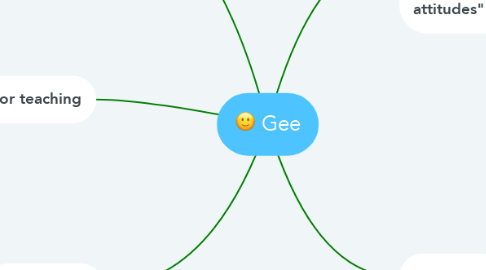Gee
저자: Autumn Lavezzi


1. "In socially situated language use one must simultaneously say the 'right' thing, do the 'right' thing, and in such saying and doing also express the 'right' beliefs, values, and attitudes" (148).
1.1. To what extent do you attempt to teach students the dominant Discourses vs. valuing their primary Discourses which may not be dominant?
2. Discourses
2.1. primary Discourse
2.1.1. Socialized into, non-specialized, non-professional. Becomes lifeworld Discourse through transformation.
2.1.2. Families adopt secondary Discourse practices into the primary Discourse through early borrowing.
2.2. secondary Discourse
2.2.1. All the Discourses acquired within the "public sphere."
2.3. DEFINITION: "Discourses are all about how people 'get their acts together' to get recognized as a given kind of person at a specific time and place" (152).
2.4. acquisition
2.4.1. DEFINITION: Acquiring through exposure.
2.5. learning
2.5.1. DEFINITION: A process involving conscious knowledge gained through teaching or certain life experiences.
3. discourse
3.1. DEFINITION: Language in use, that makes sense (ex: conversations, stories, reports).
3.2. A part of Discourse
4. Applications for teaching
4.1. Classrooms should include active apprenticeships and connect these with social practices.
4.2. People can make use of "mushfake" Discourses (partial acquisition).
5. Connections
5.1. Purcell-Gates: Donny's school did not perceive his parents as saying the "right" thing, at the "right" time, in the "right" way.
5.1.1. Experience drives literacy; therefore literacy is a cultural practice.

